Abstract
Staphylococcus aureus C-243, an enterotoxin B-producing strain, was cultured on media adjusted to various water activity (aw) levels by means of two different solute systems. Total numbers and rate of growth were diminished at low aw levels, and enterotoxin synthesis was extremely sensitive to reduction in aw. A reduction of aw from 0.99 to 0.98 in one medium and from 0.99 to 0.97 in the other medium resulted in extremely low levels of enterotoxin in spent culture media despite the attainment of high numbers of staphylococci.
Full text
PDF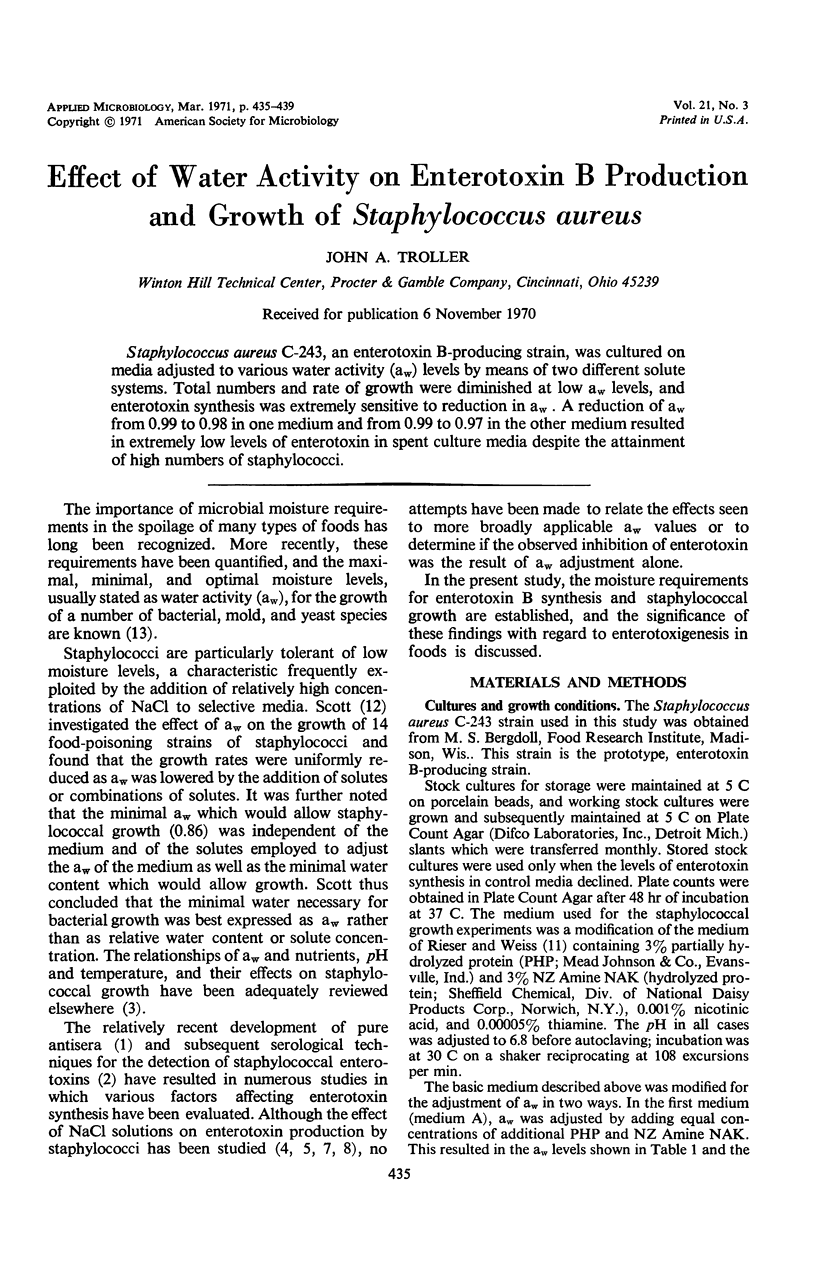
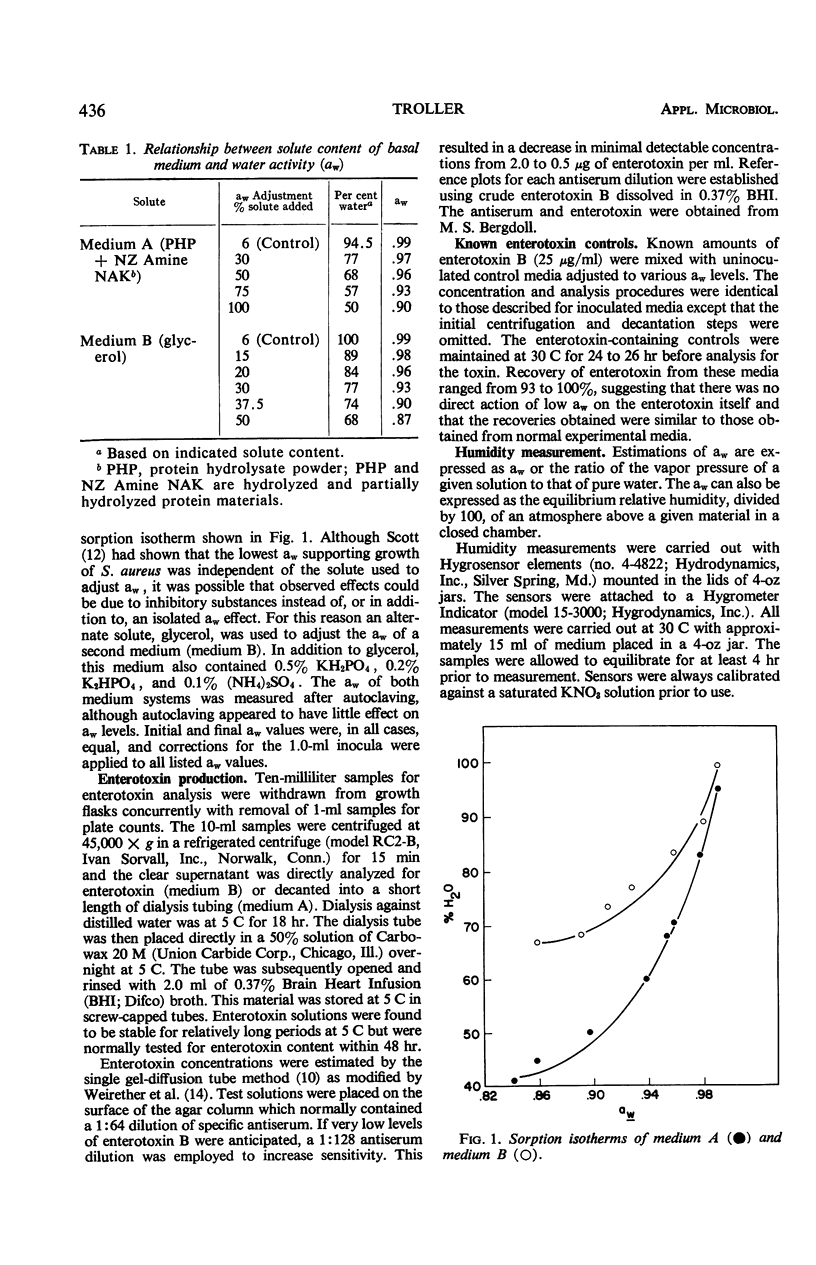
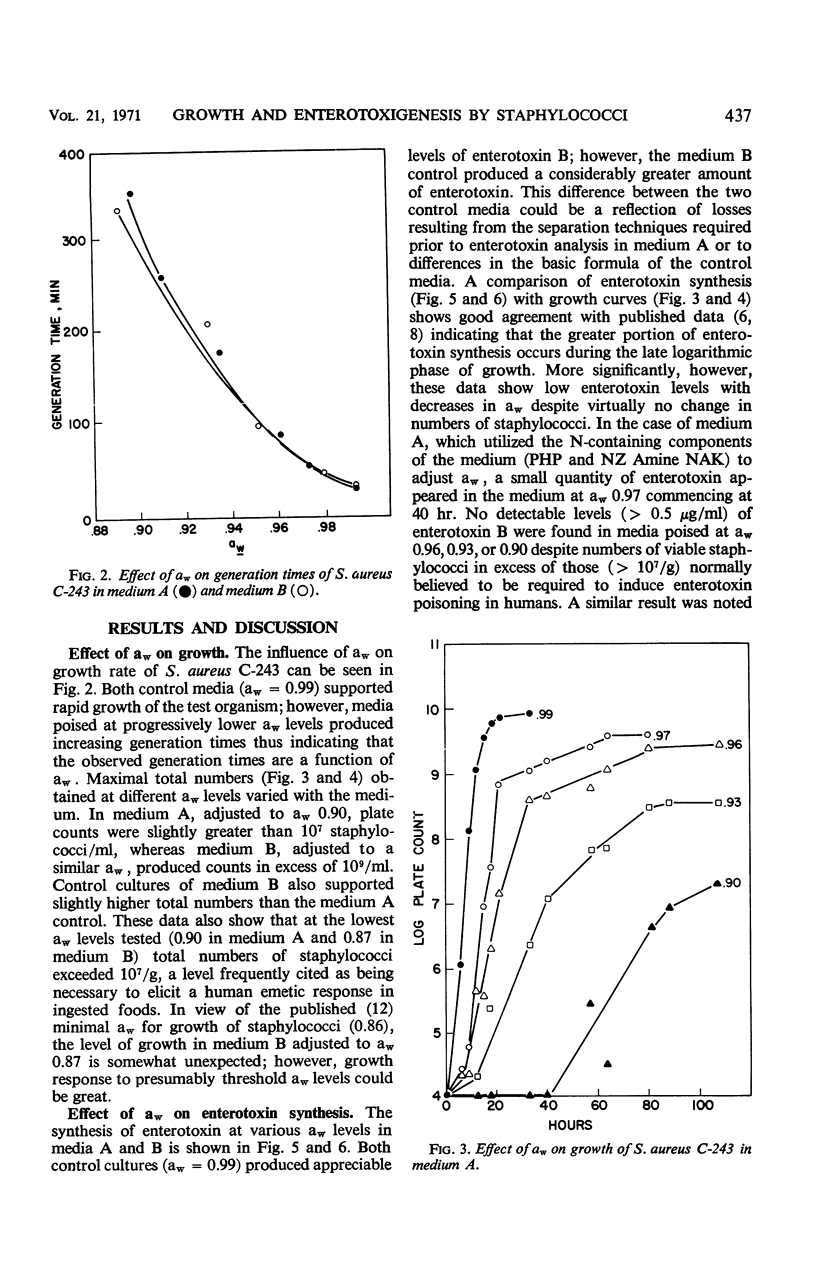
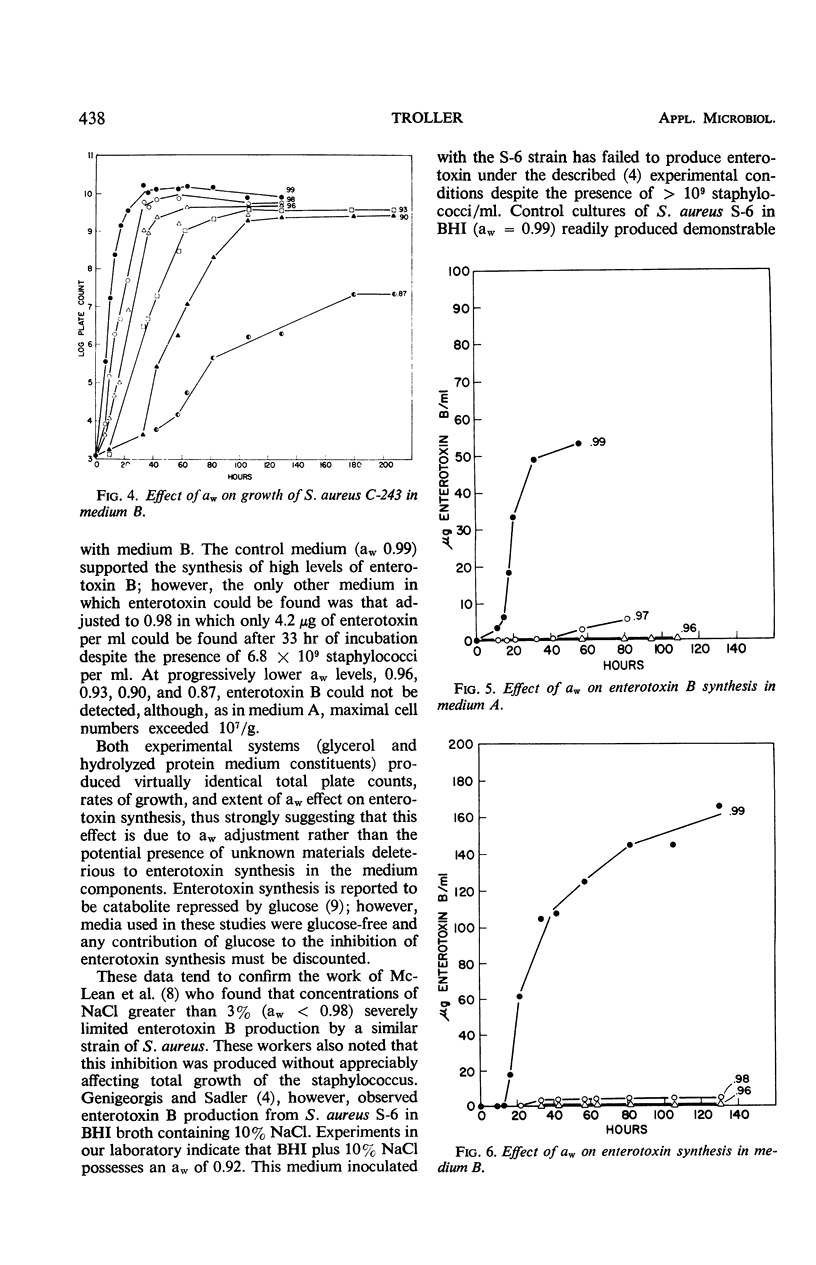
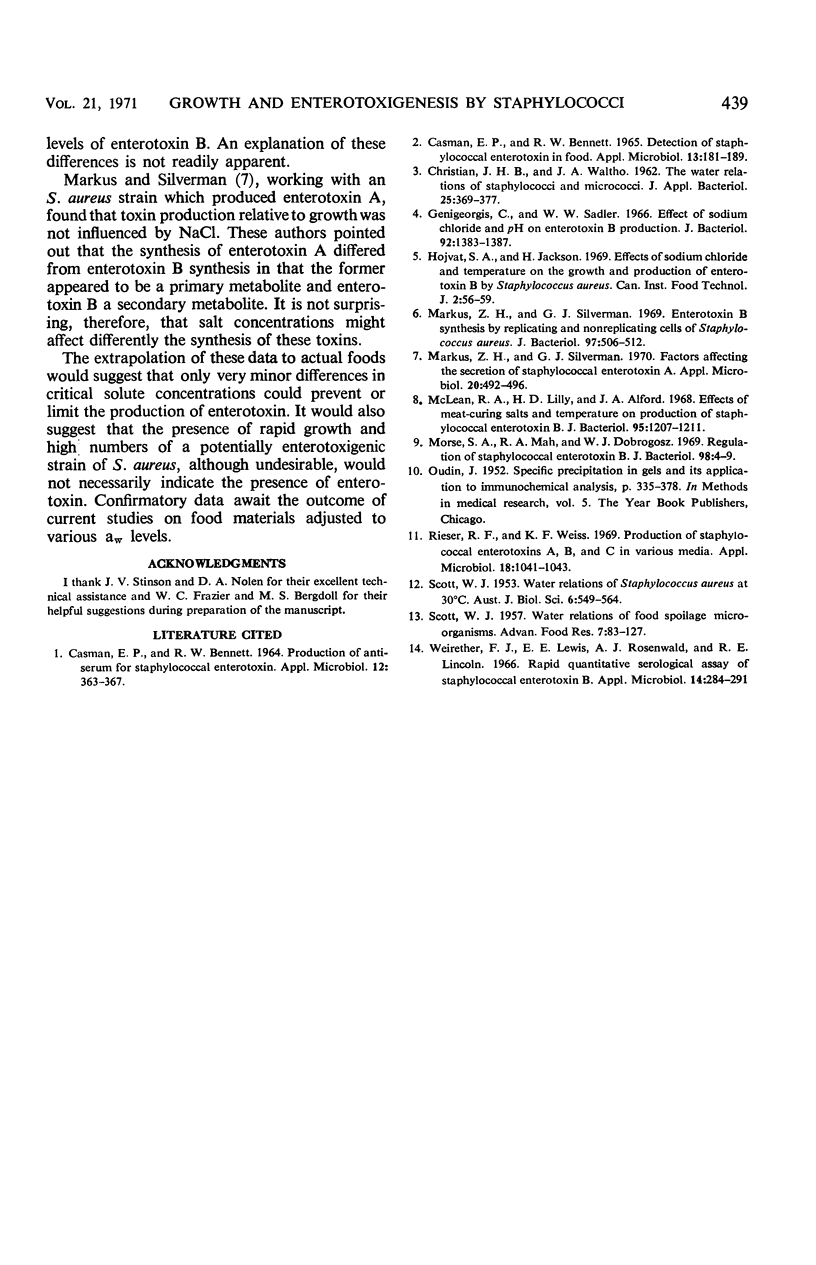
Selected References
These references are in PubMed. This may not be the complete list of references from this article.
- CASMAN E. P., BENNETT R. W. DETECTION OF STAPHYLOCOCCAL ENTEROTOXIN IN FOOD. Appl Microbiol. 1965 Mar;13:181–189. doi: 10.1128/am.13.2.181-189.1965. [DOI] [PMC free article] [PubMed] [Google Scholar]
- CASMAN E. P., BENNETT R. W. PRODUCTION OF ANTISERUM FOR STAPHYLOCOCCAL ENTEROTOXIN. Appl Microbiol. 1964 Jul;12:363–367. doi: 10.1128/am.12.4.363-367.1964. [DOI] [PMC free article] [PubMed] [Google Scholar]
- Genigeorgis C., Sadler W. W. Effect of sodium chloride and pH on enterotoxin B production. J Bacteriol. 1966 Nov;92(5):1383–1387. doi: 10.1128/jb.92.5.1383-1387.1966. [DOI] [PMC free article] [PubMed] [Google Scholar]
- Markus Z. H., Silverman G. J. Factors affecting the secretion of staphylococcal enterotoxin A. Appl Microbiol. 1970 Sep;20(3):492–496. doi: 10.1128/am.20.3.492-496.1970. [DOI] [PMC free article] [PubMed] [Google Scholar]
- Markus Z., Silverman G. J. Enterotoxin B synthesis by replicating and nonreplicating cells of Staphylococcus aureus. J Bacteriol. 1969 Feb;97(2):506–512. doi: 10.1128/jb.97.2.506-512.1969. [DOI] [PMC free article] [PubMed] [Google Scholar]
- McLean R. A., Lilly H. D., Alford J. A. Effects of meat-curing salts and temperature on production of staphylococcal enterotoxin B. J Bacteriol. 1968 Apr;95(4):1207–1211. doi: 10.1128/jb.95.4.1207-1211.1968. [DOI] [PMC free article] [PubMed] [Google Scholar]
- Morse S. A., Mah R. A., Dobrogosz W. J. Regulation of staphylococcal enterotoxin B. J Bacteriol. 1969 Apr;98(1):4–9. doi: 10.1128/jb.98.1.4-9.1969. [DOI] [PMC free article] [PubMed] [Google Scholar]
- OUDIN J. B. Specific precipitation in gels and its application to immunochemical analysis. Methods Med Res. 1952;5:335–378. [PubMed] [Google Scholar]
- Reiser R. F., Weiss K. F. Production of staphylococcal enterotoxins A, B, and C in various media. Appl Microbiol. 1969 Dec;18(6):1041–1043. doi: 10.1128/am.18.6.1041-1043.1969. [DOI] [PMC free article] [PubMed] [Google Scholar]
- SCOTT W. J. Water relations of Staphylococcus aureus at 30 degrees C. Aust J Biol Sci. 1953 Nov;6(4):549–564. [PubMed] [Google Scholar]
- Weirether F. J., Lewis E. E., Rosenwald A. J., Lincoln R. E. Rapid quantitative serological assay of staphylococcal enterotoxin B. Appl Microbiol. 1966 Mar;14(2):284–291. doi: 10.1128/am.14.2.284-291.1966. [DOI] [PMC free article] [PubMed] [Google Scholar]


